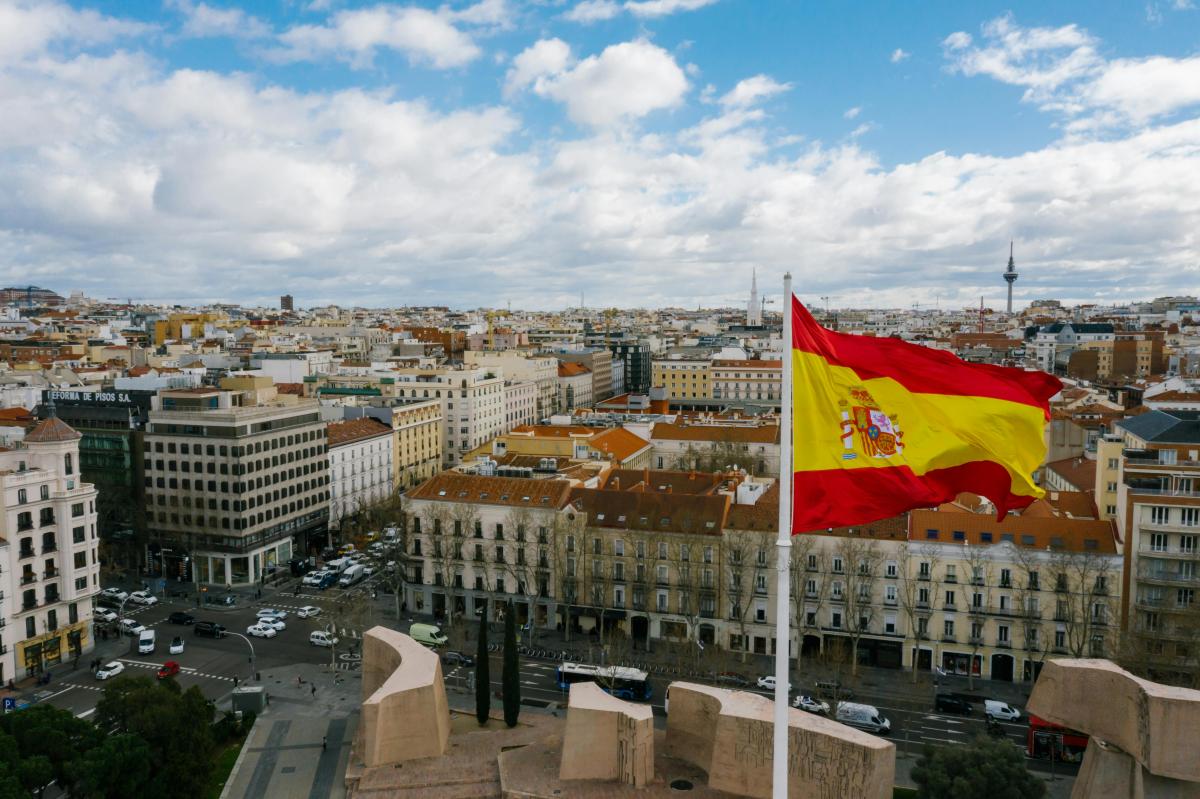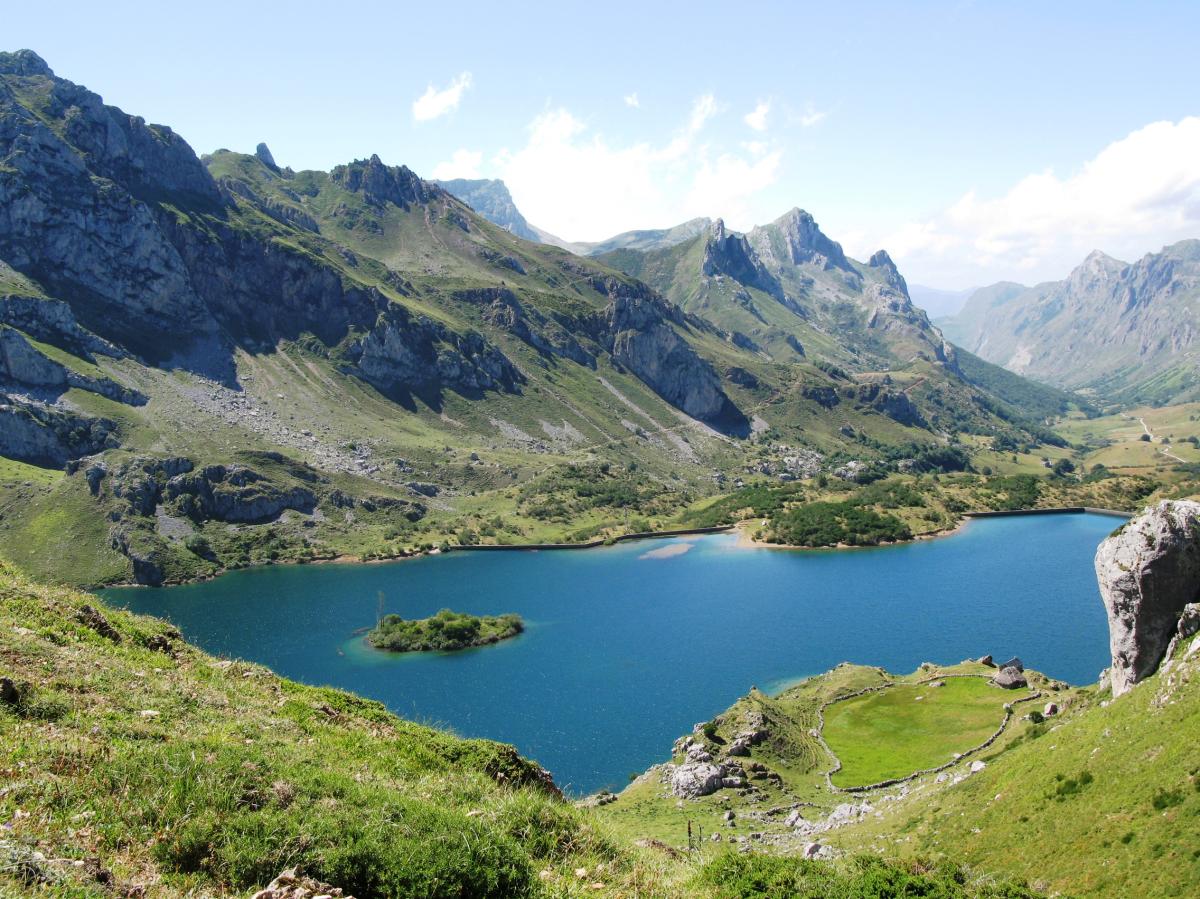
Spain Attractions: A Guide to the Best Places to Visit in Spain
Spain is a country that offers something for everyone. Whether you are looking for culture, history, nature, or nightlife, you will find it in Spain. Spain is one of the most popular tourist destinations in Europe, attracting millions of visitors every year. But what are the best places to visit in Spain? In this article, we will explore some of the most amazing Spain attractions that you should not miss on your trip. We will cover 15 different categories of attractions, from cities and monuments to beaches and islands. Let’s get started!
1. Cities: Madrid and Barcelona
Spain has many beautiful and vibrant cities, but two of them stand out as the most famous and visited: Madrid and Barcelona. Madrid is the capital and the largest city of Spain, located in the center of the country. It is a city of contrasts, where you can find modern skyscrapers and historic buildings, elegant boulevards and lively squares, world-class museums and colorful markets. Some of the highlights of Madrid include the Royal Palace, the Prado Museum, the Plaza Mayor, the Retiro Park, and the Gran Via.
Barcelona is the second-largest city and the capital of Catalonia, located on the Mediterranean coast. It is a city of art, culture, and innovation, where you can admire the stunning architecture of Antoni Gaudi, such as the Sagrada Familia, the Park Guell, and the Casa Batllo. You can also enjoy the lively atmosphere of the Gothic Quarter, the Ramblas, and the Boqueria Market, or relax on the sandy beaches of Barceloneta and Bogatell.
2. Monuments: Alhambra and Sagrada Familia
Spain has a rich and diverse cultural heritage, reflected in its many monuments and landmarks. Two of the most impressive and iconic monuments in Spain are the Alhambra and the Sagrada Familia. The Alhambra is a palace and fortress complex located in Granada, in the south of Spain. It was built by the Moorish rulers of the Nasrid dynasty in the 13th and 14th centuries, and it is considered one of the finest examples of Islamic art and architecture in the world. The Alhambra consists of several palaces, gardens, courtyards, and towers, decorated with intricate geometric patterns, arabesques, and calligraphy. The most famous parts of the Alhambra are the Patio of the Lions, the Hall of the Abencerrajes, and the Generalife gardens.
The Sagrada Familia is a basilica and a masterpiece of modernist architecture, designed by Antoni Gaudi in Barcelona. It is one of the most visited and recognizable buildings in the world, and it is still under construction, more than a century after its inception. The Sagrada Familia is a symbol of Gaudi’s vision and creativity, combining Gothic and Art Nouveau elements, as well as religious and natural motifs. The Sagrada Familia has three facades, each representing a different aspect of the life of Jesus Christ: the Nativity, the Passion, and the Glory. The interior of the basilica is equally impressive, with a forest-like structure of columns, vaults, and stained glass windows.
3. Museums: Prado and Guggenheim
Spain is home to some of the most prestigious and renowned museums in the world, showcasing the works of some of the greatest artists in history. Two of the most famous and visited museums in Spain are the Prado and the Guggenheim. The Prado is the main national art museum of Spain, located in Madrid. It houses one of the finest collections of European art, from the 12th to the 19th century, with more than 8,000 paintings, sculptures, drawings, and prints. Some of the most famous artists represented in the Prado include Velazquez, Goya, El Greco, Rubens, Titian, Bosch, and Caravaggio. Some of the most famous paintings in the Prado include Las Meninas, The Third of May 1808, The Garden of Earthly Delights, and The Descent from the Cross.
The Guggenheim is a museum of modern and contemporary art, located in Bilbao, in the north of Spain. It is part of the Solomon R. Guggenheim Foundation, and it was designed by the American architect Frank Gehry. The Guggenheim is a striking and innovative building, made of titanium, glass, and limestone, and shaped like a ship, a flower, or a fish, depending on the angle. The Guggenheim hosts permanent and temporary exhibitions of some of the most influential artists of the 20th and 21st centuries, such as Picasso, Warhol, Kandinsky, Pollock, Rothko, and Koons. Some of the most famous artworks in the Guggenheim include Puppy, The Matter of Time, and Maman.
4. Nature: Pyrenees and Picos de Europa
Spain is not only a country of cities and monuments, but also a country of nature and landscapes. Spain has a diverse and varied geography, with mountains, plains, rivers, lakes, and coasts. Two of the most beautiful and spectacular natural areas in Spain are the Pyrenees and the Picos de Europa. The Pyrenees are a mountain range that forms the natural border between Spain and France, stretching for about 500 km from the Mediterranean Sea to the Atlantic Ocean. The Pyrenees offer stunning scenery, with snow-capped peaks, green valleys, glacial lakes, and dense forests. The Pyrenees are also a paradise for outdoor activities, such as hiking, skiing, climbing, cycling, and rafting. Some of the most popular places to visit in the Pyrenees include the Ordesa and Monte Perdido National Park, the Aigüestortes and Lake of San Mauricio National Park, and the Vall de Nuria.
The Picos de Europa are a mountain range that belongs to the Cantabrian Mountains, located in the north of Spain. They are named after the fact that they were the first sight of Europe for the sailors coming from America. The Picos de Europa are composed of three massifs: the Western, the Central, and the Eastern, each with its own characteristics and attractions. The Picos de Europa are known for their dramatic and rugged landscape, with steep cliffs, deep gorges, rocky peaks, and alpine meadows. The Picos de Europa are also home to a rich flora and fauna, including the endangered Cantabrian brown bear, the Iberian wolf, the golden eagle, and the capercaillie. Some of the most popular places to visit in the Picos de Europa include the Covadonga Lakes, the Cares Gorge, the Naranjo de Bulnes, and the Fuente Dé Cable Car.
5. Beaches: Costa del Sol and Costa Brava
Spain is blessed with a long and diverse coastline, with more than 8,000 km of beaches, coves, and bays. Spain has some of the best beaches in Europe, and in the world, with warm and clear waters, golden and white sands, and stunning views. Two of the most famous and visited coastal areas in Spain are the Costa del Sol and the Costa Brava. The Costa del Sol is a stretch of coastline that belongs to the province of Malaga, in the south of Spain. It is one of the most popular tourist destinations in Spain, especially for sun-seekers and golfers. The Costa del Sol has more than 300 days of sunshine per year, and more than 150 km of beaches, ranging from urban and crowded to secluded and wild. Some of the most popular places to visit in the Costa del Sol include Marbella, Torremolinos, Fuengirola, Nerja, and Mijas.
The Costa Brava is a stretch of coastline that belongs to the province of Girona, in the northeast of Spain. It is one of the most beautiful and scenic coastal areas in Spain, with a rugged and rocky landscape, dotted with pine trees, cacti, and flowers. The Costa Brava has more than 200 km of beaches, coves, and cliffs, offering a variety of options for swimming, snorkeling, diving, sailing, and kayaking. Some of the most popular places to visit in the Costa Brava include Cadaques, Lloret de Mar, Tossa de Mar, Begur, and Calella de Palafrugell.
6. Islands: Canary Islands and Balearic Islands
Spain also has some of the most amazing and diverse islands in the world, located in the Atlantic Ocean and the Mediterranean Sea. Two of the most famous and visited island groups in Spain are the Canary Islands and the Balearic Islands. The Canary Islands are a group of seven main islands and several smaller ones, located off the coast of Africa, in the Atlantic Ocean. They are known for their volcanic origin, their subtropical climate, and their unique culture and cuisine. The Canary Islands offer a variety of landscapes, from black and white sand beaches, to lush forests, to barren deserts, to snow-capped mountains. Each island has its own personality and attractions, such as the Teide National Park in Tenerife, the Timanfaya National Park in Lanzarote, the Maspalomas Dunes in Gran Canaria, the Siam Park in Tenerife, and the Carnival in Santa Cruz de Tenerife.
The Balearic Islands are a group of four main islands and several smaller ones, located in the Mediterranean Sea, off the east coast of Spain. They are known for their mild climate, their turquoise waters, and their nightlife. The Balearic Islands offer a variety of experiences, from relaxing and romantic, to adventurous and fun, to cultural and historical. Each island has its own charm and attractions, such as the Cathedral of Palma de Mallorca, the Formentera Beaches, the Caves of Drach in Mallorca, the Cala Macarella in Menorca, and the Ibiza Clubs.
7. Festivals: La Tomatina and San Fermin
Spain is a country of festivals and celebrations, with hundreds of events taking place throughout the year, in every region and town. Spain’s festivals are colorful, lively, and sometimes crazy, reflecting the spirit and traditions of the Spanish people. Two of the most famous and fun festivals in Spain are La Tomatina and San Fermin. La Tomatina is a festival that takes place on the last Wednesday of August, in the town of Bunol, near Valencia. It is the world’s biggest food fight, where thousands of people gather to throw tomatoes at each other, for no other reason than having fun. The tomato battle lasts for about an hour, and then the participants wash themselves in the nearby river or public showers.
San Fermin is a festival that takes place from July 6 to July 14, in the city of Pamplona, in the north of Spain. It is the most famous festival in Spain, and one of the most dangerous, as it involves the running of the bulls. Every morning, at 8 a.m., six bulls are released from their corral and run through the narrow streets of the old town, chased by hundreds of people, who try to avoid being gored or trampled. The run ends at the bullring, where the bulls are later fought by professional bullfighters. The festival also includes other activities, such as parades, concerts, fireworks, and religious ceremonies.
8. Food: Paella and Tapas
Spain is a country of food and gastronomy, with a rich and varied cuisine, influenced by its history, geography, and culture. Spain’s food is delicious, diverse, and healthy, using fresh and local ingredients, such as olive oil, garlic, tomatoes, cheese, ham, seafood, and wine. Two of the most famous and representative dishes of Spain are paella and tapas. Paella is a rice dish that originated in Valencia, in the east of Spain. It is cooked in a large shallow pan, over a wood fire, and it can have different ingredients, depending on the region and the preference of the cook. The most traditional paella is made with chicken, rabbit, snails, beans, and saffron, but there are also other versions, such as seafood paella, vegetable paella, or mixed paella.
Tapas are small portions of food that are served as appetizers or snacks, usually accompanied by a drink, such as wine, beer, or sangria. Tapas can be hot or cold, simple or elaborate, and they can include a variety of ingredients, such as cheese, ham, olives, potatoes, eggs, fish, meat, or vegetables. Tapas are not only a way of eating, but also a way of socializing, as people share them with friends or family, in bars or restaurants, while chatting and having fun.
9. Wine: Rioja and Cava
Spain is a country of wine and viticulture, with a long and prestigious tradition of producing and consuming wine. Spain has more than 70 wine regions, each with its own characteristics and styles, and more than 400 grape varieties, some of them unique to Spain. Spain’s wine is diverse, quality, and affordable, and it can satisfy any taste and occasion. Two of the most famous and popular wines in Spain are Rioja and Cava. Rioja is a red wine that comes from the region of La Rioja, in the north of Spain. It is made mainly from the Tempranillo grape, and it is aged in oak barrels, giving it a complex and elegant flavor, with hints of vanilla, leather, and spices. Rioja is one of the most prestigious and recognized wines in the world, and it has different categories, depending on the aging time: joven, crianza, reserva, and gran reserva.
Cava is a sparkling wine that comes from the region of Catalonia, in the northeast of Spain. It is made from a blend of three grape varieties: Macabeo, Xarel-lo, and Parellada, and it is fermented in the bottle, following the same method as Champagne. Cava is a fresh and fruity wine, with fine bubbles and a crisp finish, and it can be dry or sweet, depending on the sugar content. Cava is one of the most popular and consumed wines in Spain, and it is perfect for celebrations, such as weddings, birthdays, or New Year’s Eve.
10. Art: Picasso and Dali
Spain is a country of art and creativity, with a rich and influential artistic heritage, spanning from the prehistoric cave paintings to the contemporary avant-garde movements. Spain has produced some of the most brilliant and original artists in history, who have left their mark on the world of art and culture. Two of the most famous and influential artists in Spain are Picasso and Dali. Picasso was a painter, sculptor, and founder of Cubism, one of the most revolutionary and innovative movements in modern art. Picasso was born in Malaga, in the south of Spain, but he spent most of his life in France, where he created some of his most famous works, such as Les Demoiselles d’Avignon, Guernica, and The Weeping Woman. Picasso was a prolific and versatile artist, who experimented with different styles, techniques, and media, and who expressed his emotions, ideas, and opinions through his art.
Dali was a painter, sculptor, and leader of Surrealism, one of the most imaginative and eccentric movements in modern art. Dali was born in Figueres, in the northeast of Spain, where he also died and where his museum is located. Dali was a genius and a madman, who created some of the most surreal and bizarre works, such as The Persistence of Memory, The Elephants, and The Temptation of Saint Anthony. Dali was inspired by his dreams, his subconscious, his sexuality, and his religion, and he used his art to explore his fantasies, fears, and obsessions.
11. Music: Flamenco and Pop
Spain is a country of music and rhythm, with a diverse and vibrant musical scene, influenced by its history, geography, and culture. Spain’s music is expressive, passionate, and catchy, and it can make anyone dance and sing along. Two of the most famous and representative genres of music in Spain are flamenco and pop. Flamenco is a musical genre that originated in Andalusia, in the south of Spain, and that combines singing, guitar playing, and dancing. Flamenco is a fusion of different musical influences, such as Arabic, Jewish, Gypsy, and Spanish, and it is characterized by its intensity, emotion, and improvisation. Flamenco has different styles, or palos, such as solea, buleria, fandango, or sevillana, and some of the most famous flamenco artists include Camaron de la Isla, Paco de Lucia, and Sara Baras.
Pop is a musical genre that emerged in the second half of the 20th century, and that encompasses a variety of styles, such as rock, pop-rock, indie, or electro-pop. Pop is the most popular and mainstream genre of music in Spain, and it has produced some of the most successful and acclaimed artists, both nationally and internationally. Some of the most famous pop artists in Spain include Julio Iglesias, Alejandro Sanz, Enrique Iglesias, Rosalia, and Aitana.
12. Sports: Football and Tennis
Spain is a country of sports and competition, with a strong and proud sporting tradition, and with some of the best athletes and teams in the world. Spain’s sports are exciting, entertaining, and inspiring, and they attract millions of fans and spectators. Two of the most famous and popular sports in Spain are football and tennis. Football is the national sport and the most followed and practiced sport in Spain. Spain has some of the best football clubs and players in the world, such as Real Madrid, Barcelona, Atletico Madrid, Sergio Ramos, Lionel Messi, and Karim Benzema. Spain’s national football team, also known as La Roja, is one of the most successful and respected teams in the world, having won the World Cup in 2010, and the European Championship in 2008 and 2012.
Tennis is another sport that has a lot of popularity and prestige in Spain, especially thanks to the achievements and charisma of some of its players. Spain has some of the best tennis players and tournaments in the world, such as Rafael Nadal, Garbine Muguruza, David Ferrer, and Pablo Carreno Busta. Spain’s national tennis team, also known as La Armada, is one of the most powerful and competitive teams in the world, having won the Davis Cup six times, the last one in Spain also hosts some of the best tennis tournaments in the world, such as the Madrid Open, the Barcelona Open, and the Mallorca Championships.
13. History: Roman and Moorish
Spain is a country of history and legacy, with a rich and fascinating past, that has shaped its present and future. Spain’s history is a mix of different civilizations, cultures, and influences, that have left their mark on its land, people, and identity. Two of the most important and influential historical periods in Spain are the Roman and the Moorish. The Roman period lasted from the 3rd century BC to the 5th century AD, when Spain was part of the Roman Empire, and was known as Hispania. The Romans brought their language, law, religion, art, and architecture to Spain, and built some of the most impressive and lasting monuments, such as the Aqueduct of Segovia, the Amphitheatre of Merida, and the Bridge of Cordoba.
The Moorish period lasted from the 8th century to the 15th century, when Spain was under the rule of the Muslim invaders from North Africa, and was known as Al-Andalus. The Moors brought their science, philosophy, literature, and art to Spain, and created some of the most beautiful and sophisticated monuments, such as the Alhambra of Granada, the Mosque of Cordoba, and the Giralda of Seville.
14. Culture: Bullfighting and Flamenco
Spain is a country of culture and tradition, with a rich and diverse cultural heritage, that reflects its history, geography, and culture. Spain’s culture is unique, original, and captivating, and it can be seen in its art, literature, music, and folklore. Two of the most characteristic and controversial aspects of Spain’s culture are bullfighting and flamenco. Bullfighting is a spectacle and a sport, that involves a bullfighter, or torero, facing a bull, in a circular arena, or plaza de toros, using a cape, a sword, and a pair of banderillas. Bullfighting is a tradition that dates back to the 18th century, and that has a lot of symbolism, ritual, and drama. Bullfighting is also a source of debate and controversy, as some people consider it a form of art and culture, while others consider it a form of animal cruelty and violence.
Flamenco is a form of art and culture, that involves singing, guitar playing, and dancing, and that expresses the emotions, feelings, and stories of the people. Flamenco is a tradition that originated in Andalusia, in the south of Spain, and that has a lot of influences, such as Arabic, Jewish, Gypsy, and Spanish. Flamenco is also a source of pride and recognition, as it is considered a UNESCO Intangible Cultural Heritage of Humanity, and as it has spread and evolved around the world.
15. Architecture: Gaudi and Calatrava
Spain is a country of architecture and design, with a rich and varied architectural heritage, that spans from the ancient to the modern, and from the traditional to the avant-garde. Spain’s architecture is impressive, innovative, and diverse, and it can be seen in its buildings, bridges, and monuments. Two of the most famous and influential architects in Spain are Gaudi and Calatrava. Gaudi was an architect and a genius, who lived and worked in Barcelona, in the late 19th and early 20th century. He was the leader of the Catalan Modernism, a movement that combined nature, art, and religion, in a unique and original way. Gaudi created some of the most stunning and iconic buildings in the world, such as the Sagrada Familia, the Park Guell, and the Casa Batllo.
Calatrava is an architect and an engineer, who was born and studied in Valencia, in the mid-20th century. He is the leader of the contemporary architecture, a movement that combines structure, function, and aesthetics, in a dynamic and elegant way. Calatrava has created some of the most spectacular and futuristic buildings in the world, such as the City of Arts and Sciences in Valencia, the Turning Torso in Malmo, and the Oculus in New York.
Conclusion
Spain is a country that has it all: cities, monuments, museums, nature, beaches, islands, festivals, food, wine, art, music, sports, history, culture, and architecture. Spain is a country that is worth visiting, exploring, and enjoying, as it offers a variety of attractions, experiences, and emotions, for every taste and preference. Spain is a country that will surprise you, delight you, and make you fall in love with it. Spain is a country that you will never forget.




Preparing for a trip to Spain involves careful planning and consideration to enhance the travel experience and ensure a smooth journey. This comprehensive guide covers essential aspects such as budgeting, itinerary planning, accommodation choices, documentation requirements, and cultural etiquette, making...

Restaurants throughout the provinces of Malaga and Granada are participating in Spains Veggie Vuelta, which runs from November 2 to November 5.

Spain is a country that boasts of spectacular natural beauty, from its stunning coastlines to its lush greenery. For outdoor lovers in search of an adventure, the country has plenty to offer with its diverse range of hiking trails and national parks. From the dizzying heights of the Montaña Palentina...